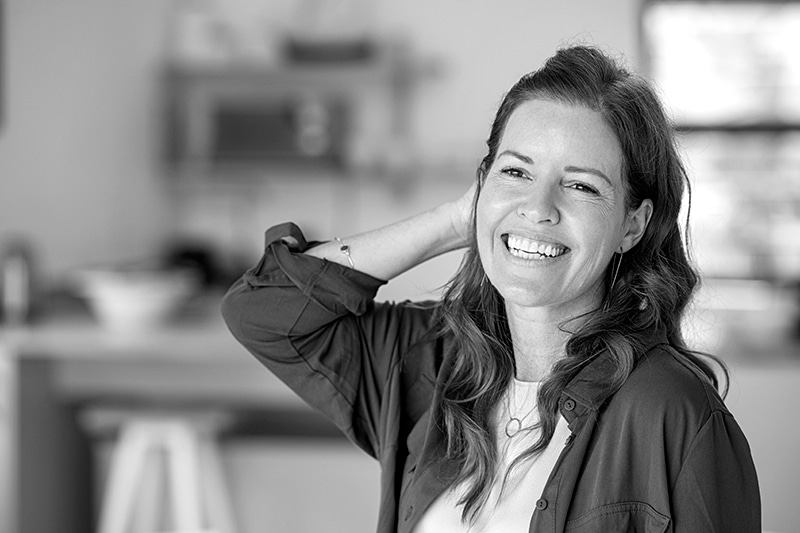Managing Skin Cancer In Metro Richmond, VA

According to the Skin Cancer Foundation, 1 in 5 Americans will develop skin cancer by age 70. Fortunately, most skin cancers are treatable when caught early. At Dr. Alan Burke: Facial Plastics & Reconstructive Surgery, we are proud to work with Dermatology Associates of Virginia (DAV) to treat skin cancer with Mohs surgery. After surgery, Dr. Burke then helps patients achieve the best cosmetic results with reconstructive surgery.
What Is MOHS Surgery?
Mohs micrographic surgery (Mohs surgery) is a specialized surgical technique used by dermatologists to treat skin cancer, particularly the two most common kinds of skin cancer—basal cell carcinoma and squamous cell carcinoma. It is the most successful treatment for skin cancers, with a cure rate of 99 percent. Mohs surgery is an outpatient procedure that is performed in stages over the course of one day. It can be used on any part of the body, but is most commonly used on the face, scalp, ears, hands and feet.
Dr. Burke’s partnership with Mohs surgeons
There are two aspects to skin cancer surgery: the excision (usually by a dermatologist or Mohs surgeon) and the cosmetic closure (often by a plastic surgeon if the repair is more complex).
Local Mohs surgeons, or dermatologists that have a patient with skin cancer who requires surgeon excision, often collaborate with facial plastic surgeons for more complex repairs of facial tissue.
If this is suspected to be the case prior to surgery, your physician will refer you to our office to plan and collaborate for the surgery accordingly.
Dr. Burke requires a pre-operative consultation in our office to discuss the cosmetic repair portion of the surgery. We will answer any questions or concerns you may have about the reconstructive procedure. Patients will also follow up in the office with Dr. Burke to assess their healing post-operatively, as well as provide scar revision procedures if necessary.
"Dr. Burke is very friendly and an excellent surgeon. Great bedside manner, and very skilled. Highly recommend!"
Excision And Reconstruction With Mohs Surgery
The primary goal of the surgery is to remove all the cancerous cells while also preserving as much healthy tissue as possible.
First, your dermatologist or Mohs surgeon anesthetizes the area and then removes thin layers of cancer-containing skin one at a time, until only cancer-free tissue remains. Each layer is immediately examined under a microscope to determine if any cancer cells are still present. This process is repeated until all cancerous tissue has negative margins. This approach provides a high cure rate, removes a minimal amount of skin tissue and reduces the amount of scarring.
After the skin cancer is successfully removed, Dr. Burke, as a highly skilled facial plastic and reconstructive surgeon, steps in to close the area. Dr. Burke can reconstruct the wound on the same day or a few days (called “slow mohs”) after the initial procedure. The extent of reconstruction needed depends on the area of the body treated and the amount of skin layers that had to be removed. Some wounds can simply be stitched up and closed. Others require specialized reconstructive techniques, such as:
- Skin flap: Uses nearby healthy skin to repair the surgical site.
- Skin graft: Takes healthy skin from another area of the body to cover the wound.
How Long Does Mohs And Reconstructive Surgery Take?
There is no way to determine how many layers of skin will need to be removed that day. Patients will need to wait between each stage of surgery as their tissue is being examined in the lab. Patients can expect the process to take several hours. The more layers of skin that must be removed, the more time the procedure will take.To pass the time, talk to your dermatologist about what you can bring to your surgery to occupy yourself during the downtime. Skin reconstruction post-Mohs surgery can take anywhere from a couple of minutes to several hours, depending on the size of the wound.
Tips For Preventing Skin Cancer
One of the leading causes of skin cancer is sun damage from Ultraviolet (UV) sun exposure. The best way to combat sun damage is by limiting your exposure to UV rays and protecting yourself while you are outside. Our recommendations include:

- Using a broad-spectrum sunscreen with SPF 15+ to protect exposed skin
- Reapplying your sunscreen every two hours or after swimming, sweating and toweling off
- Seeking shade, especially during midday when the sun is at its peak
- Wearing a hat, sunglasses and other clothes to protect the skin